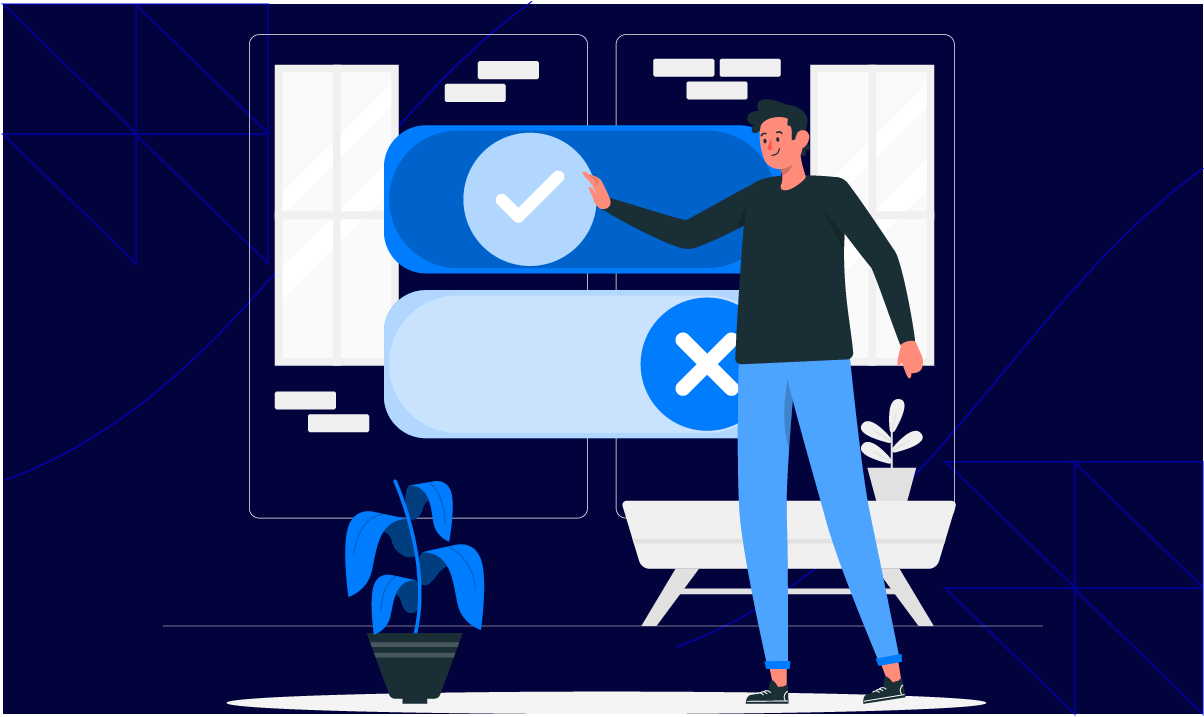What is VoC Analytics in 2025?

VoC stands for Voice of the Customer (VoC stand for in business), and in 2025, VoC analytics is all about listening better, and acting smarter. It’s the process of gathering what your customers are saying, making sense of it through analysis, and using those insights to improve your business.
But here’s the key: this isn’t just about reading a few survey comments. In 2025, the most successful brands, especially consumer brands and D2C companies in competitive markets like the U.S, U.K. and Australia, are creating a systematic, always-on approach to understanding customer needs, emotions, and expectations across every touchpoint. VoC analytics includes:
- Survey results (CSAT, NPS, CES)
- Social media comments and mentions
- Product reviews on platforms like Amazon, G2, or Trustpilot
- Chat transcripts and support ticket conversations
- Call recordings and email threads
- Even indirect signals like cancellation reasons or refund requests
Here’s where it gets powerful: voice of the customer analytics isn’t just about listening. It’s also about interpreting. It uses tools like:
- Text analytics to group common keywords or phrases
- Sentiment analysis to understand mood and tone
- Dashboards to surface trends and red flags over time
- AI and machine learning to find patterns a human might miss
Then, it turns all that information into clear, actionable insight that tells you:
- Why customers are dropping off
- What they love most about your product
- Where the experience is breaking down
- What could turn a one-time buyer into a loyal customer
In short, VoC analytics gives you clarity about what’s happening and why it’s happening, which is a game changer when you’re building a business. Let’s now get into why VoC analytics matters more than ever before!
If you’re a VP, Senior Manager or Director in customer support or customer experience at a fast-growing consumer brand with $5M+ in annual revenue and a team of 5 or more employees, VoC analytics isn’t optional. It is a strategic advantage. These are the kinds of businesses that win by acting faster on customer feedback, scaling efficiently and turning CX into a true growth driver.
Why VoC Analytics Matters More Than Ever

Customer expectations in 2025 have changed. And the statistics are compelling:
- Studies indicate that 90% of customers believe that issue resolution is their number one customer service priority.
- Research by Salesforce indicates that 88% of buyers believe that great customer service makes them more likely to purchase again.
- 86% of customers are willing to spend more if that means they get a better customer experience.
For consumer brands and D2C companies in competitive geographies, these numbers are not just interesting, they are survival metrics.
This translates into tangible business outcomes as well:
- Businesses that lead in customer experience do better than laggards by as much as 80%.
- Acquiring new customers costs 5-10x more than retaining an existing customer, and repeat buyers spend up to 67% more than new buyers.
Your customers are giving you valuable clues every single day, and if you’re not paying attention, you’re missing huge opportunities to improve. Here’s are some reasons why VoC analytics matters more than ever:
Customers Are Louder and Have More Channels to Speak Through

From live chat to Instagram DMs to third-party review sites, customers have more ways than ever to share their thoughts. VoC analytics helps you gather all that feedback into one unified picture.
Gut Instincts Don’t Scale

Sure, your team might have a sense of what customers are feeling. But intuition only gets you so far. VoC data analysis gives you facts. You don’t have to assume what customers want. You can know.
Customer Experience Is the New Brand Differentiator

In saturated markets, products and pricing are no longer enough to stand out. Experience is everything. VoC analytics helps you design smarter, smoother, more human journeys, because it shows you what customers love, what frustrates them, and where to fine-tune.
Churn Hurts. VoC Helps Prevent It.

By the time someone cancels, it’s too late. But VoC analytics can spot early signs of frustration (like negative sentiment in chats or low NPS scores), and help you act before a customer walks away.
If you operate in U.S, U.K. and Australia markets, the competition is fierce, and the customer voice travels fast through social channels, review sites, and direct feedback loops. VoC analytics helps brands in these regions spot sentiment shifts before they escalate, adapt marketing and strategies and consistently exceed expectations.
How Does VoC Analytics Work?
Here’s a step-by-step guide to how you can implement VoC analytics in your business (VoC stand for in business is about using the customer’s voice to drive smarter decisions):
1. Collect Feedback from All the Right Places

Start by listening everywhere your customers are speaking. This includes:
- Outsourced live chat support and support conversations
- NPS and CSAT surveys
- Social media mentions
- App store or product reviews
- Email replies and call transcripts
- Community forums and feedback forms
2. Bring It All Into One Place

If your data is scattered, it’s hard to see the big picture. That’s why most businesses use voice customer support service tools to centralise feedback. These platforms help you:
- Consolidate inputs from multiple sources
- Categorise by topic or channel
- Assign feedback to specific teams or stages in the customer journey
3. Analyse the Data for Patterns and Sentiment

Using VoC data analysis tools, you can:
- Identify recurring complaints or requests
- Track trending topics over time
- Score sentiment (positive, negative, neutral)
- Highlight changes in customer perception after updates or campaigns
4. Share the Insights Across Teams

Once you have clear insights, get the VoC analytics into the hands of the people who can use them. That might mean:
- Product teams adjusting features based on common complaints
- Marketing teams refining messaging based on customer language
- Support teams improving training around pain-point areas
- Leadership rethinking priorities based on shifting sentiment
5. Act on It and Close the Loop

This is probably the most important step in implementing VoC analytics. VoC analytics isn’t about watching dashboards. Instead:
- Fix what’s broken
- Double down on what’s working
- Let customers know you heard them, and that you care
6. Measure the Impact and Keep Iterating

Once you’ve made changes based on feedback, track how it’s working. Watch your:
- CSAT and NPS scores
- Support volume
- Churn rate
- Customer sentiment trends
- Engagement with new or improved features
If the numbers are moving in the right direction, great. If not? Go back to the data and iterate.
What Happens When You Get VoC Analytics Right

When businesses truly embrace VoC analytics, they understand their customers and respond to them. And that translates into real business outcomes. Here are just a few of the measurable outcomes teams see when they use voice of the customer analytics effectively:
Reduced Customer Churn
When you know why customers leave, you can stop it before it happens. VoC analytics helps you:
- Spot early signs of frustration
- Identify broken moments in the customer journey
- Proactively fix issues before they lead to cancellations or complaints
Instead of guessing why churn is rising, you’ll have a playbook for reversing the trend.
Higher Customer Satisfaction
By acting on feedback, you show customers you’re listening. The result?
- CSAT and NPS scores go up
- Customers stick around longer
- Happy customers bring in new ones through word-of-mouth and reviews
It’s a virtuous cycle of listening, improving and earning trust.
Faster Problem Resolution
When support teams are armed with VoC insights, they know what’s coming. They can:
- Pre-empt common issues
- Resolve problems faster
- Deflect tickets with smarter self-service tools
Better Product Development
Your product team no longer has to rely solely on gut instinct or internal roadmaps.
With VoC data analysis, they know:
- What features users are begging for
- What’s causing confusion or drop-off
- What competitors are doing better (according to your customers)
That means you build what people want, not just what you think they need.
Sharper, More Relevant Marketing
Your marketing team suddenly has access to your customers’ exact words. That means:
- Messaging that resonates
- Campaigns that speak directly to pain points
- Copy that converts, because it’s rooted in what customers are already saying
Common Mistakes to Avoid When Implementing VoC Analytics

VoC analytics is powerful, but only when it’s done right. If you’re not careful, all that great customer feedback you collected ends up buried in a dashboard no one checks. Here are a few common mistakes to avoid:
- Treating VoC as a One-Time Project: VoC is not a quarterly campaign or something you do “when there’s time.” It needs to be a continuous, always-on loop. Because your customers don’t stop giving feedback and your team shouldn’t stop learning from it.
- Only Listening to One Channel: Surveys are helpful, but they’re not the whole story. If you’re ignoring social comments, support transcripts, reviews, and open-ended feedback, you’re missing out on the most honest insights.
- Not Sharing Insights Beyond the CX Team: VoC isn’t just for customer service. If product, marketing, and leadership aren’t seeing the insights too, you’re limiting the impact. Get everyone involved in the conversation.
- Overlooking the Human Side of Feedback: It’s easy to get obsessed with sentiment scores and dashboards. But don’t forget, there are real people behind those numbers. Look beyond metrics and take time to understand the actual stories in your data.
- Failing to Close the Loop: The biggest mistake? Not acting on what you learn. When customers take the time to share feedback, they expect to see some response. Even if it’s a simple “We heard you, and here’s what we’re changing,” that goes a long way in building trust.
Don’t Just Hear Your Customers. Understand Them

In today’s business environment, every brand says they care about customer feedback. But let’s be honest…saying it and showing it are two very different things. The companies that actually act on feedback, build smoother customer journeys, solve pain points proactively, and evolve with their customers are the ones that win, every time. These are the businesses that use VoC analytics to drive real improvements?
If you want to be one of these businesses, but just need help putting it all into action, that’s where Atidiv comes in. At Atidiv, our team of customer experience specialists doesn’t just help you collect feedback, we help you build an omnichannel customer experience engine that runs on it. We partner with fast-growing businesses to:
- Set up VoC systems that capture insights across every channel
- Build feedback loops that drive continuous improvement
- Deliver seamless, human-first support powered by data and empathy
- Turn CX into a competitive advantage
Whether you’re just starting out or ready to scale your customer experience efforts, we’re here to help you make more data-driven business decisions. Partner with Atidiv to scale smarter.
FAQs On VoC Analytics
1. What is VoC analytics and why is it important?
VoC analytics (Voice of the Customer analytics) is the process of collecting, analysing, and acting on customer feedback from multiple channels. It helps businesses understand what customers really think and feel—so they can improve experiences, fix problems, and build stronger relationships.
2. What types of data are used in VoC analytics?
VoC analytics pulls from surveys, reviews, support tickets, live chats, social media, call transcripts, and more. Any place where customers share opinions or feedback — including through social media support services — can be turned into useful insight.
3. How does VoC analytics improve customer experience (CX)?
By turning raw feedback into actionable data, VoC analytics helps companies spot issues, identify opportunities, and respond faster. It’s a key part of any CX strategy because it keeps the customer’s voice at the centre of every decision.
4. What are the best voice of customer tools to use?
Some popular voice of customer tools include Medallia, Qualtrics, Zendesk, SurveyMonkey, and HubSpot. These platforms help collect and analyse customer feedback using features like sentiment analysis, tagging, and real-time reporting.
5. How do I get started with a VoC strategy?
Start by identifying your key feedback channels, then use customer feedback analytics tools to track patterns and pain points. From there, build a cross-functional plan to prioritise changes, implement improvements, and keep the feedback loop active.

